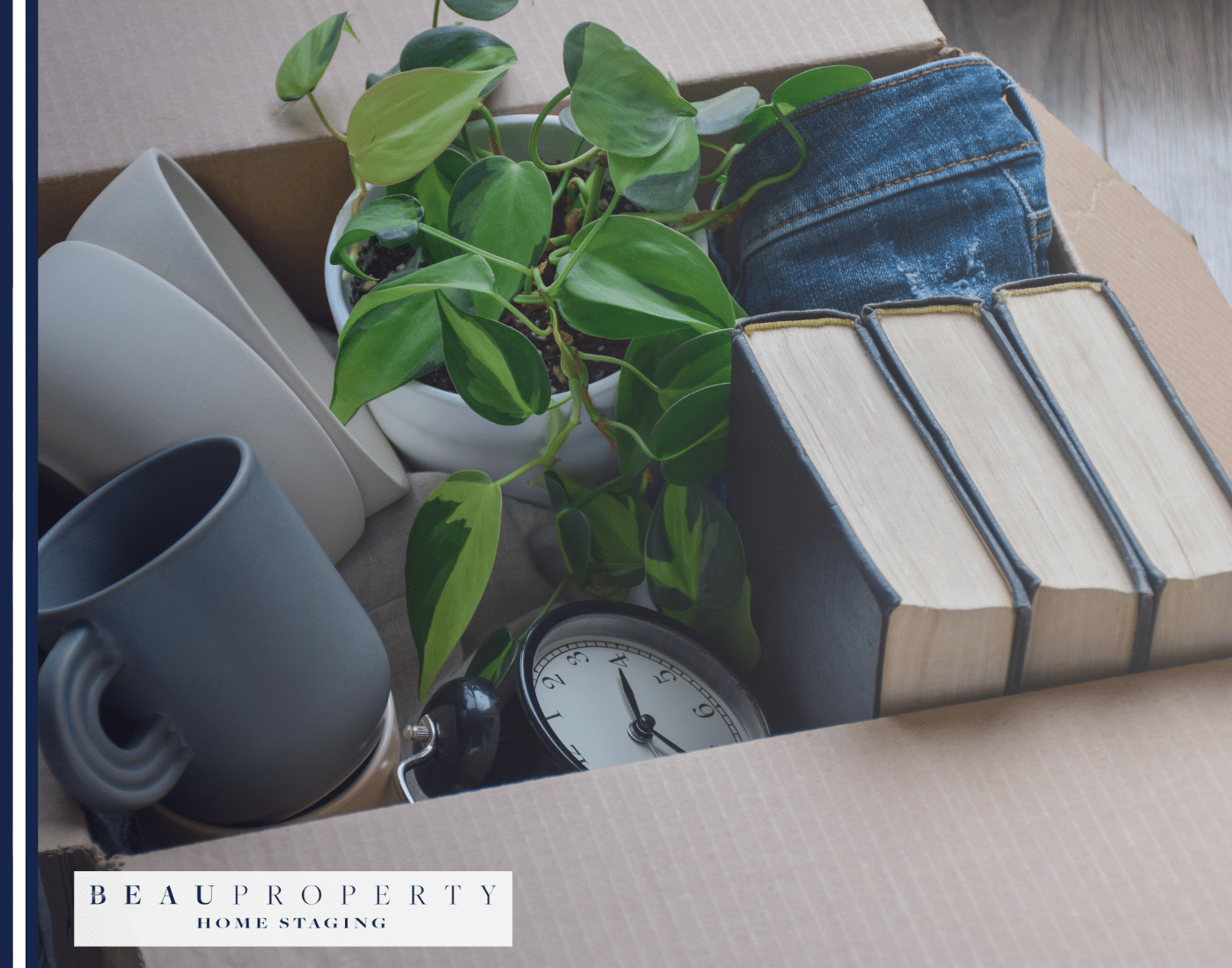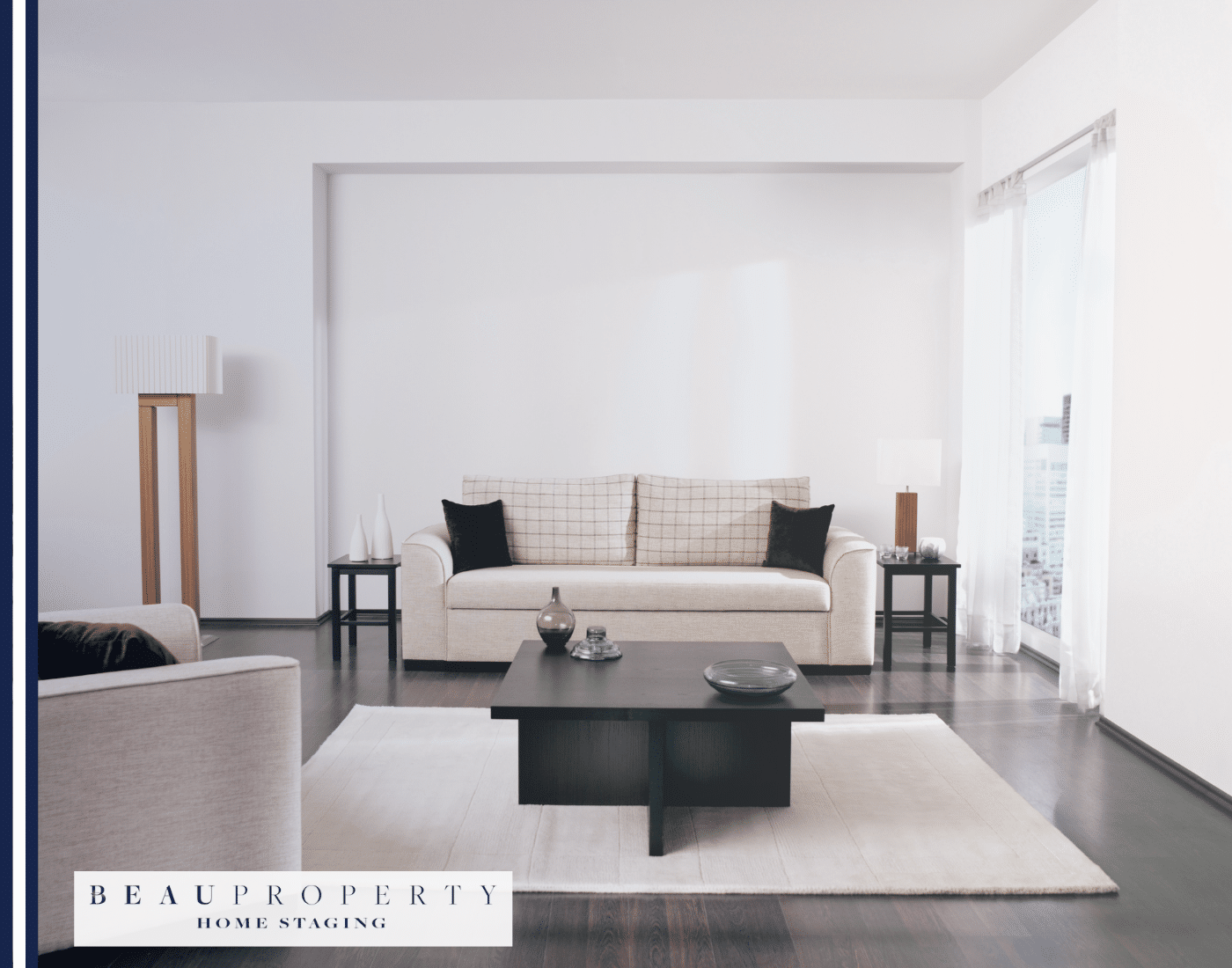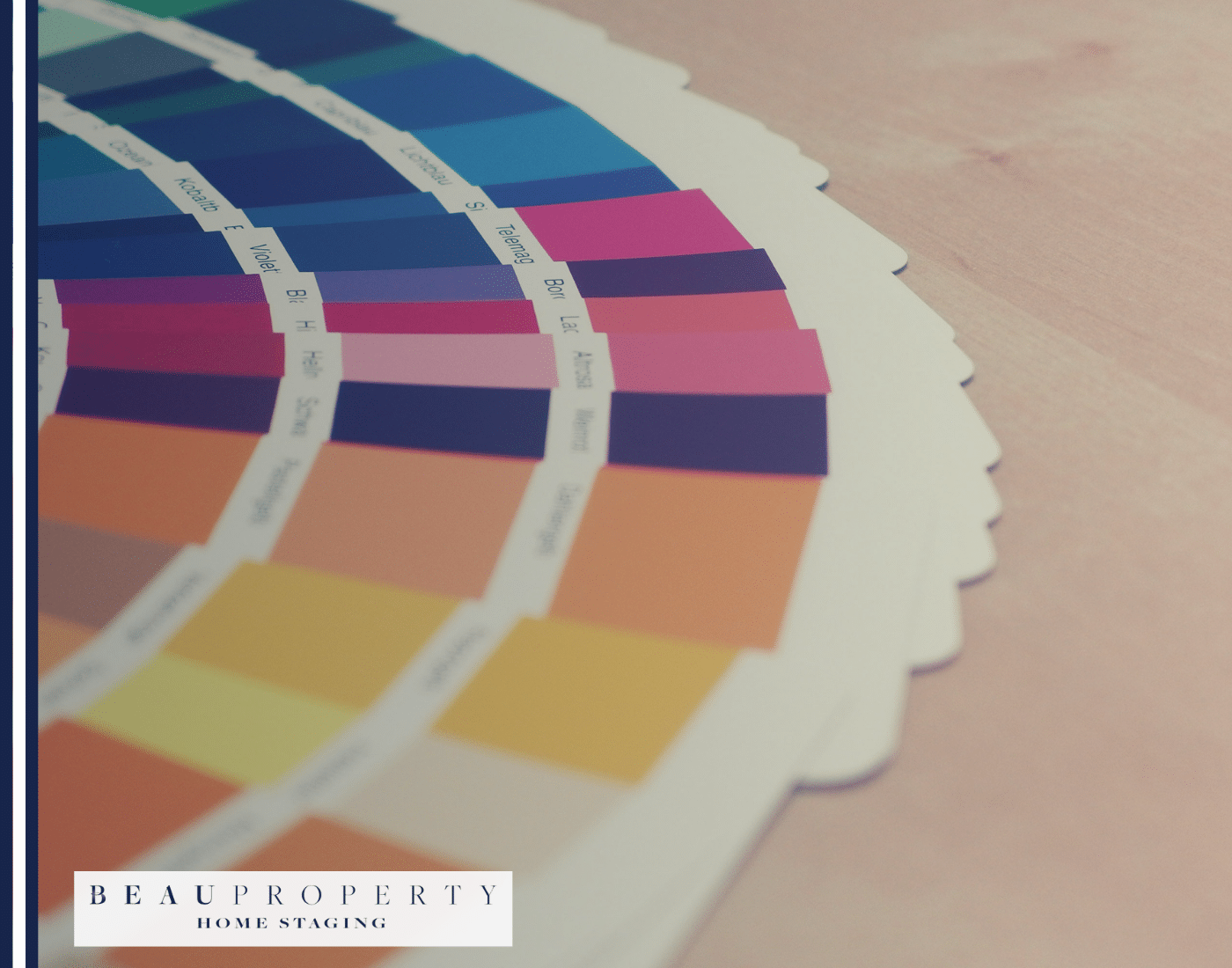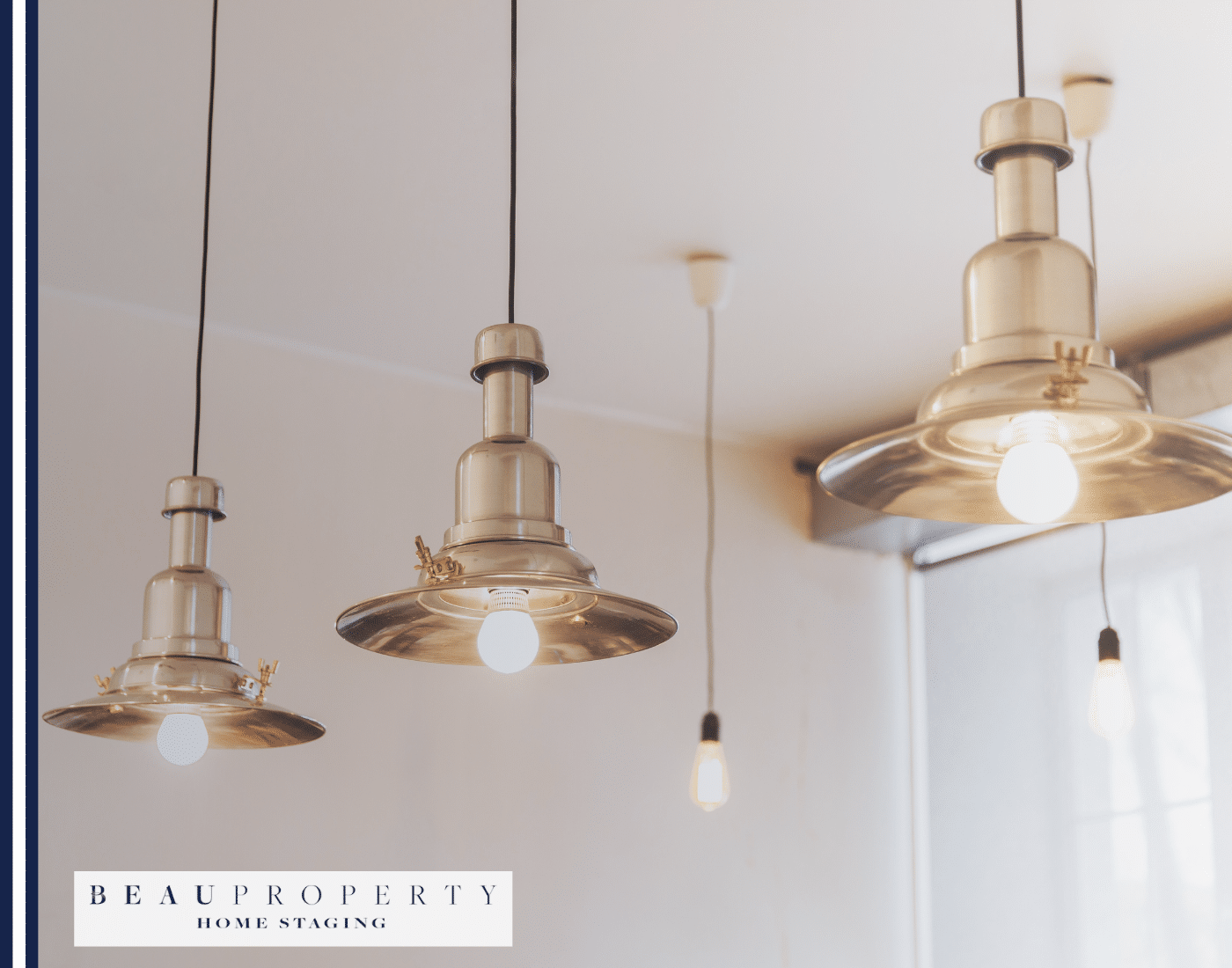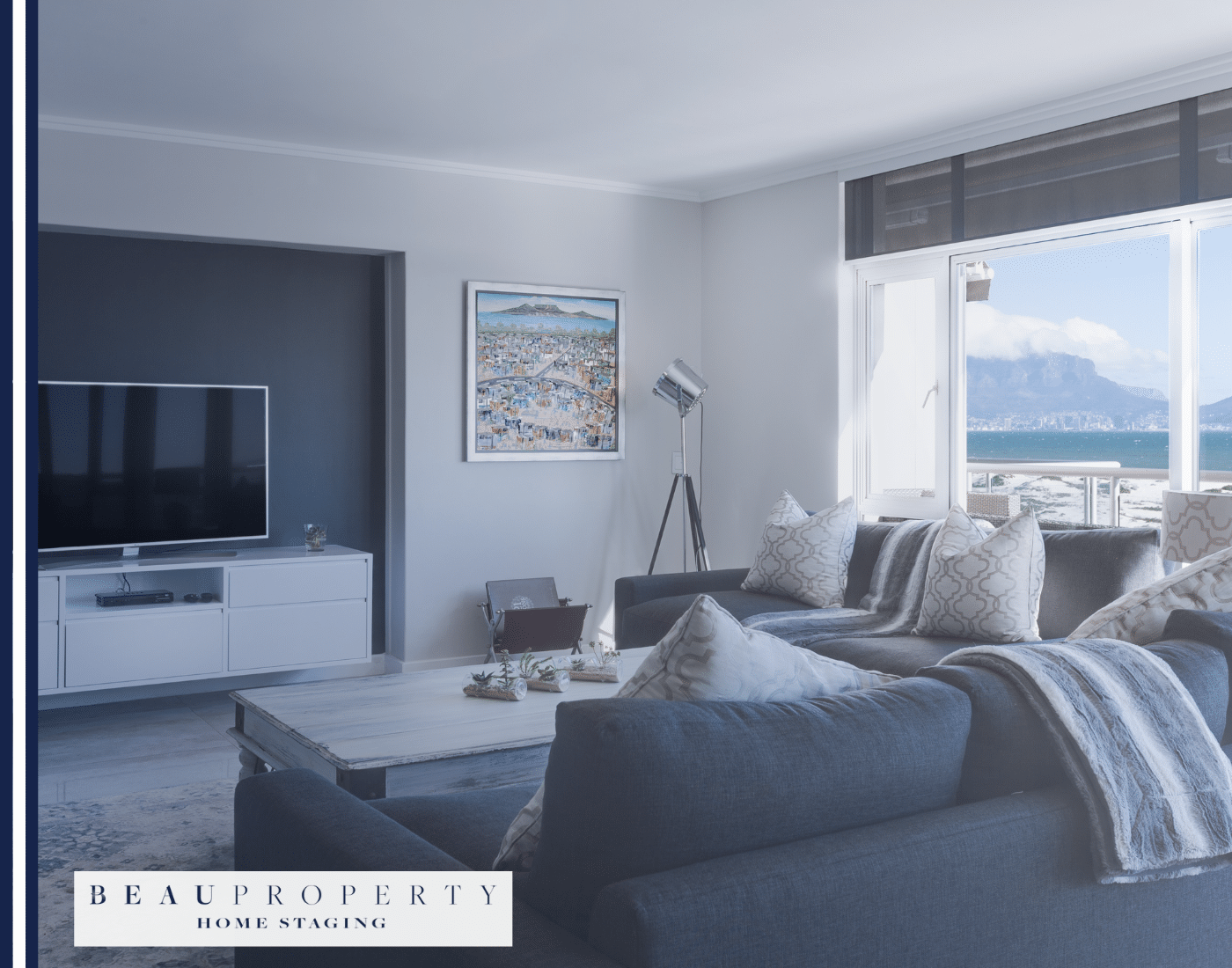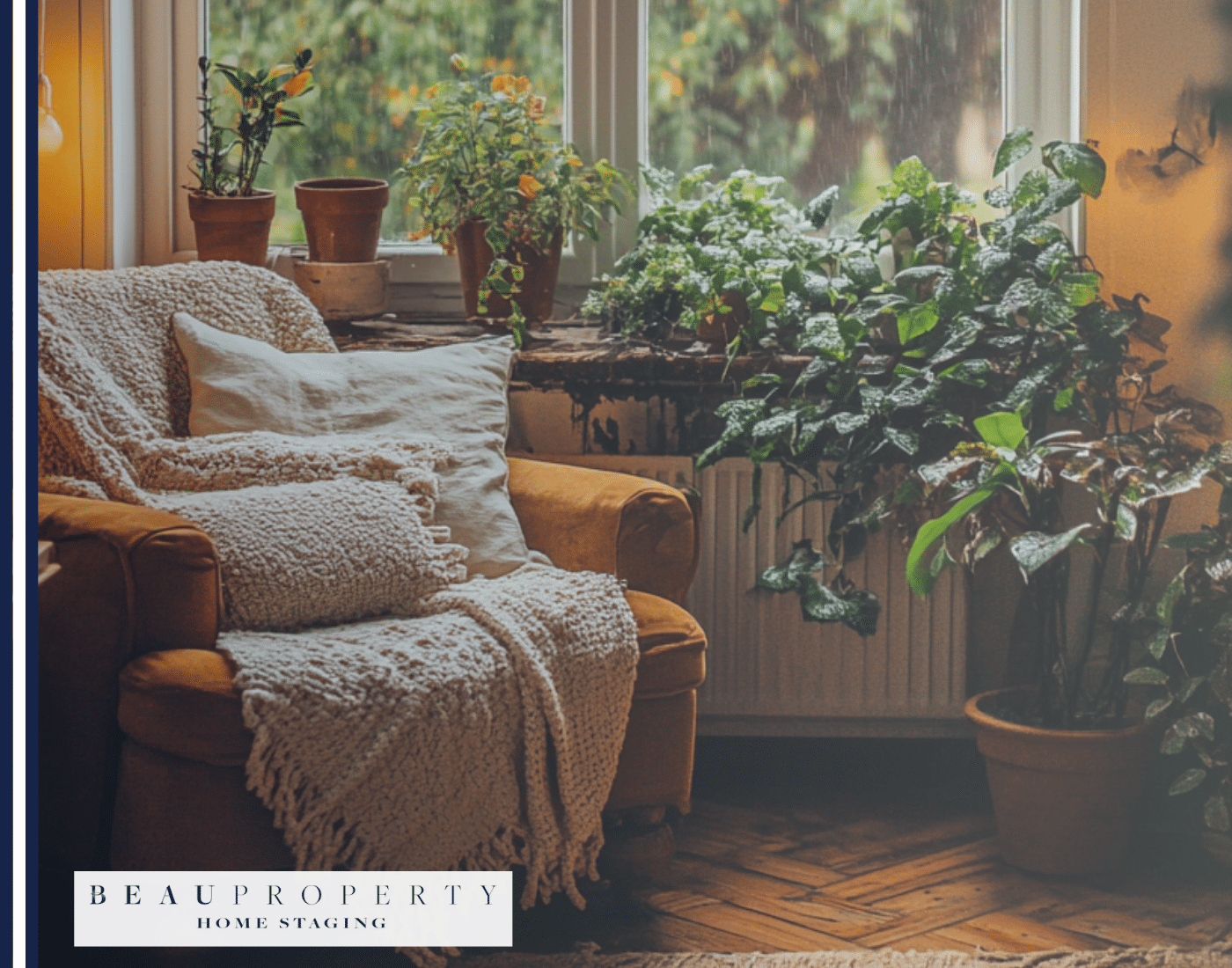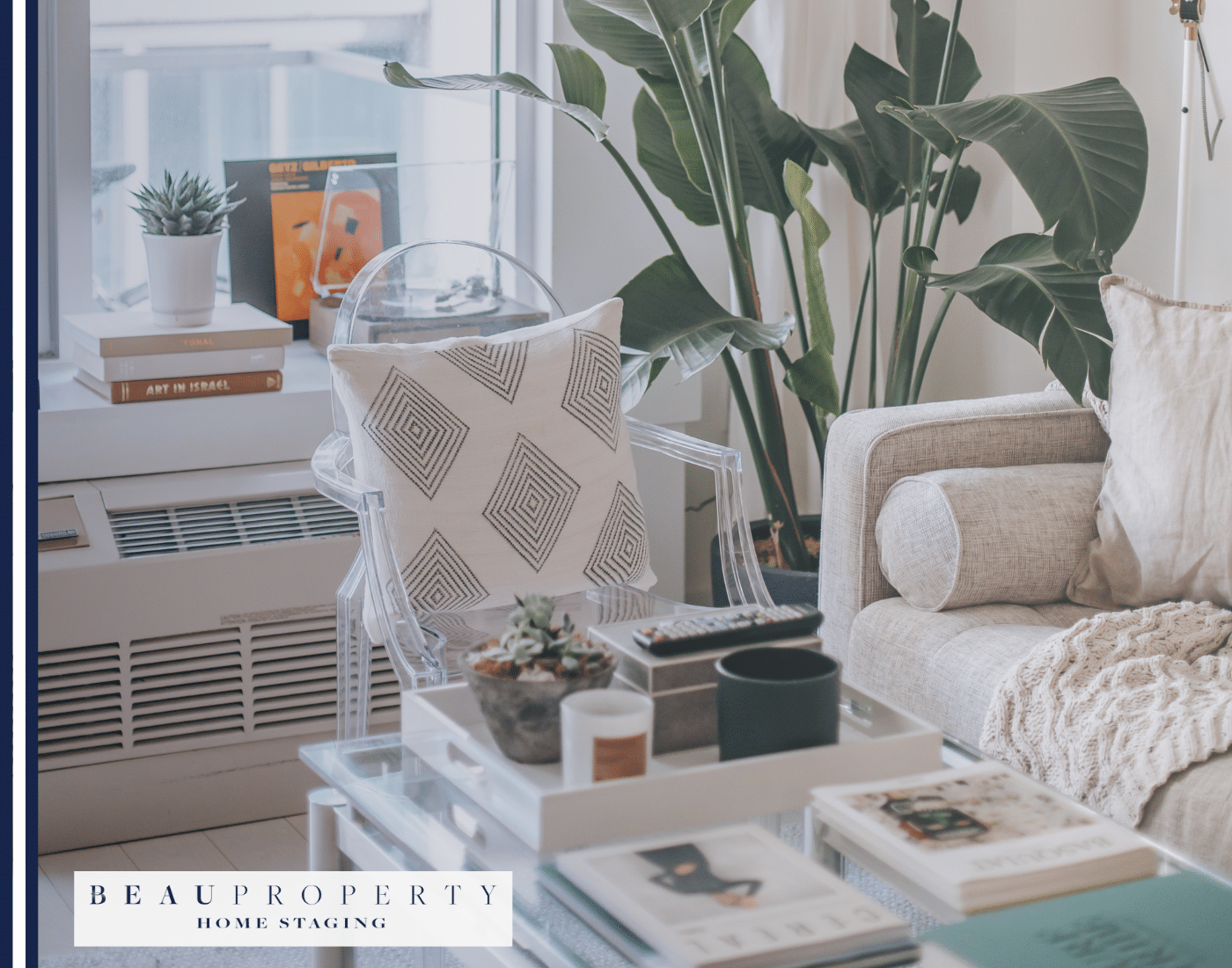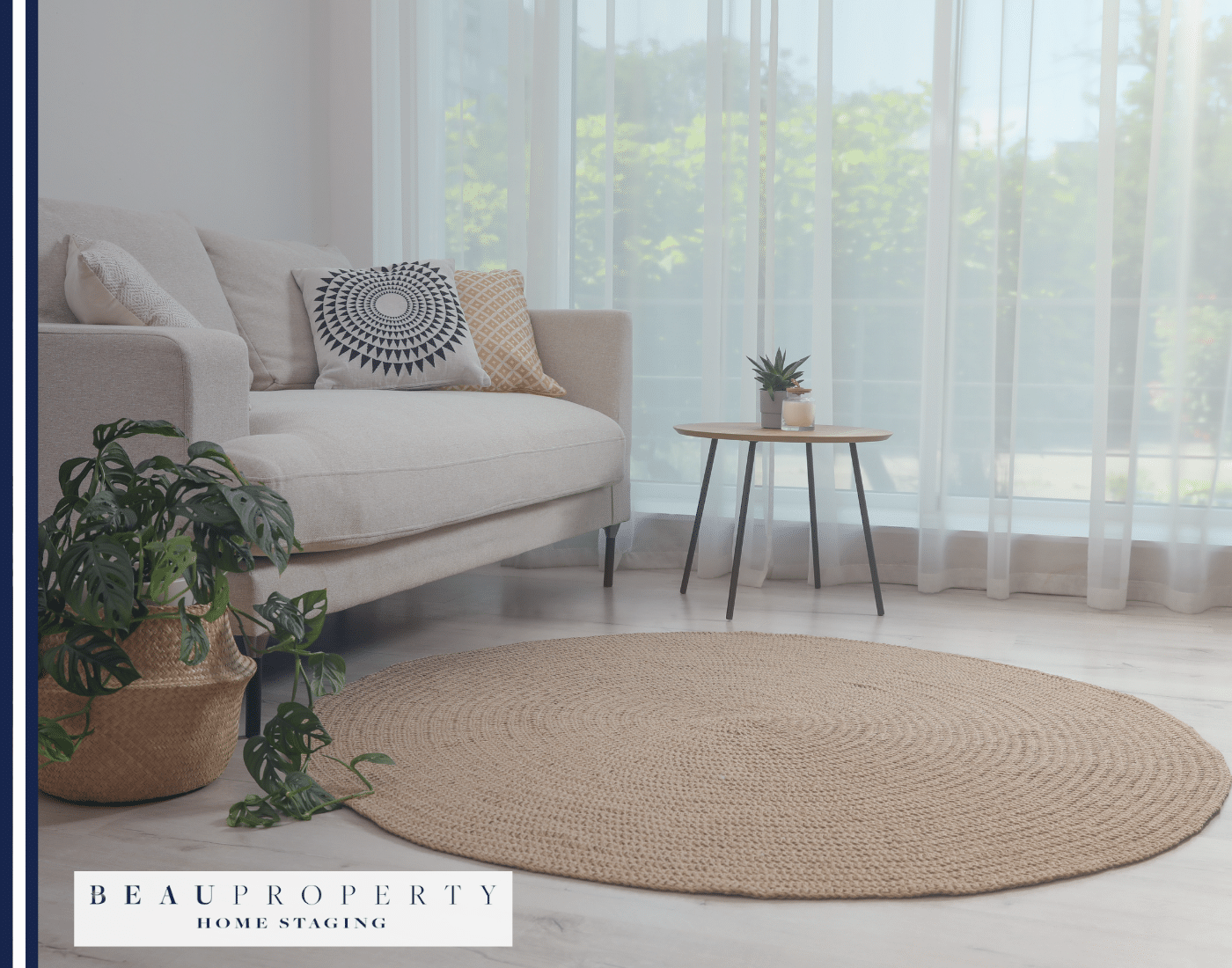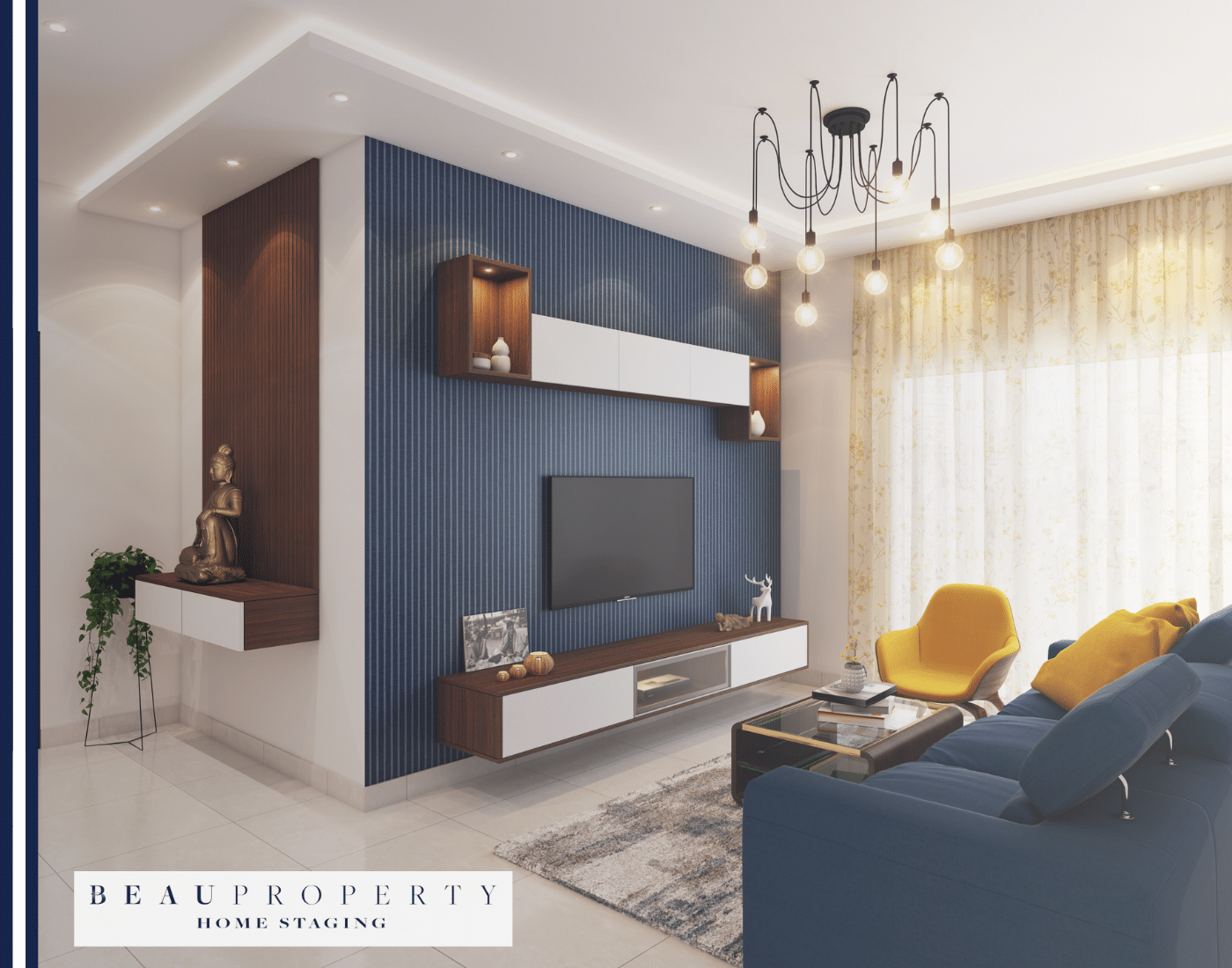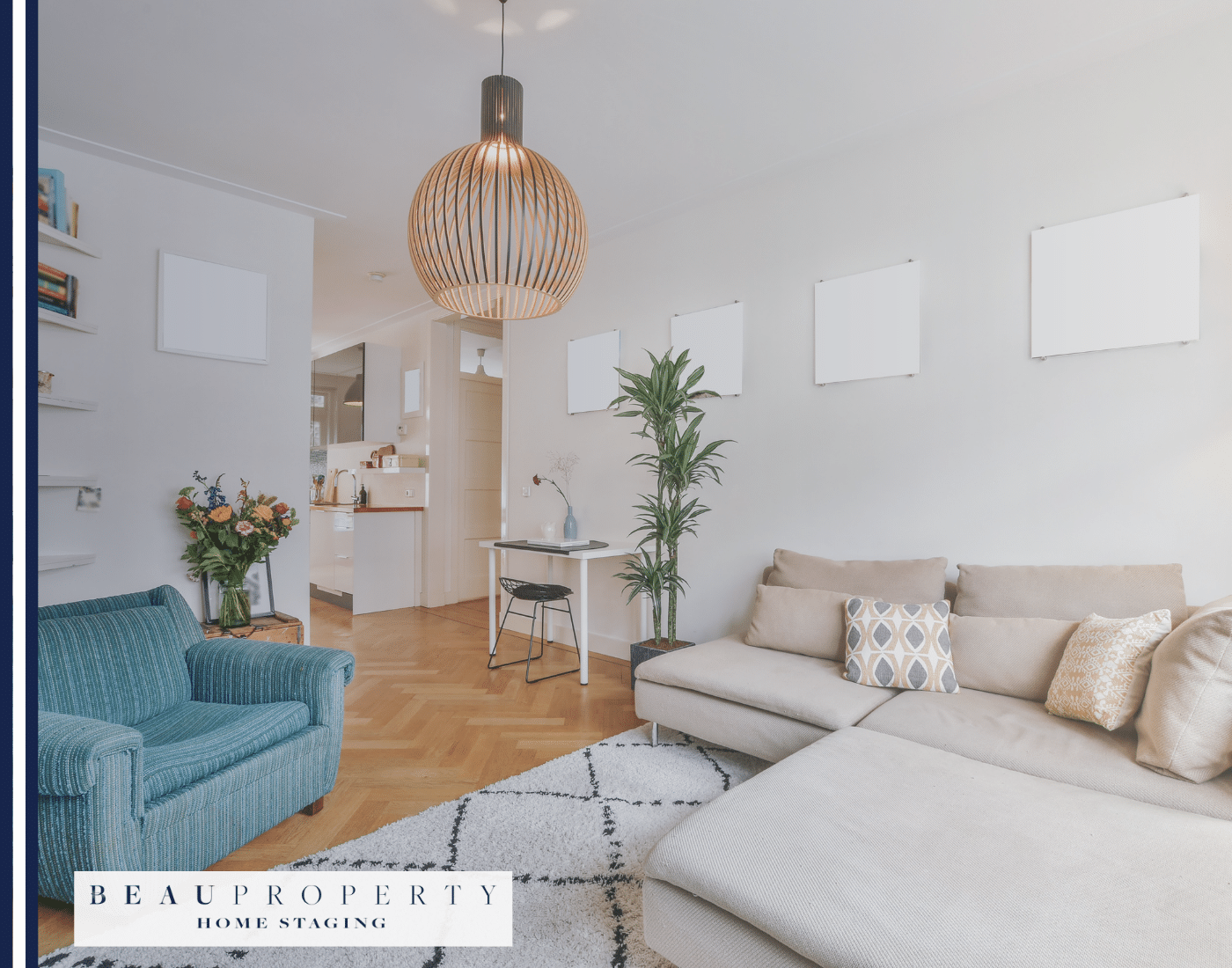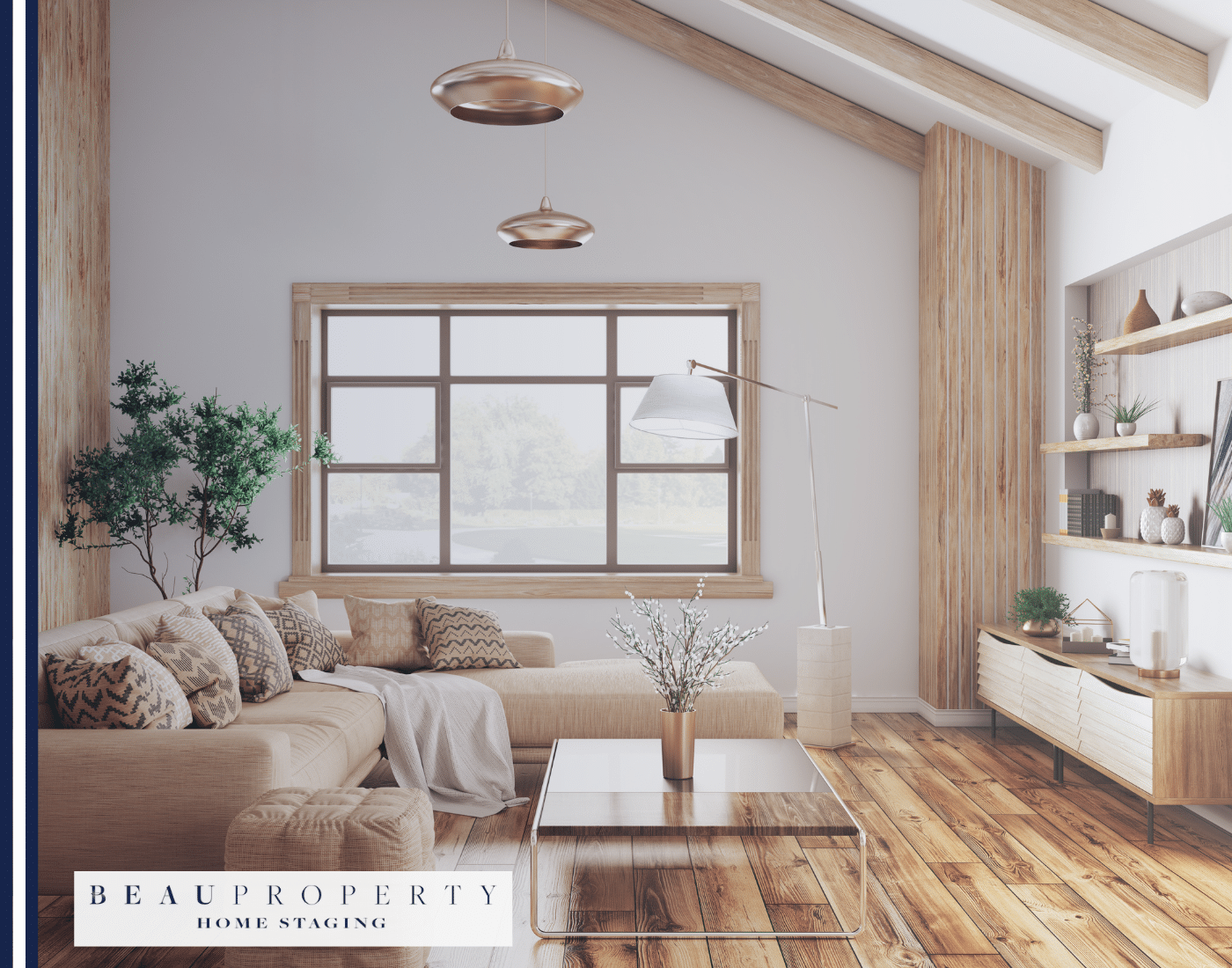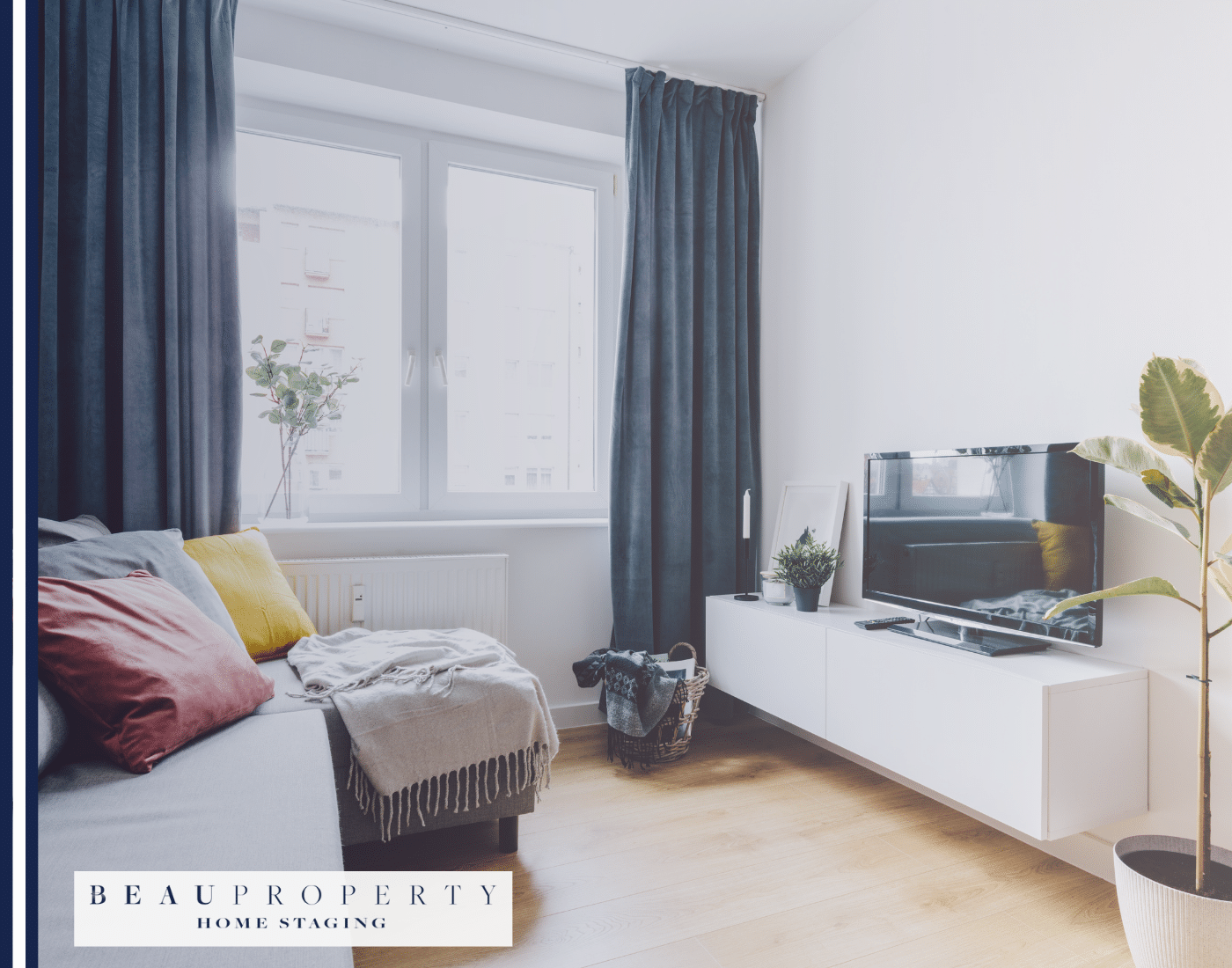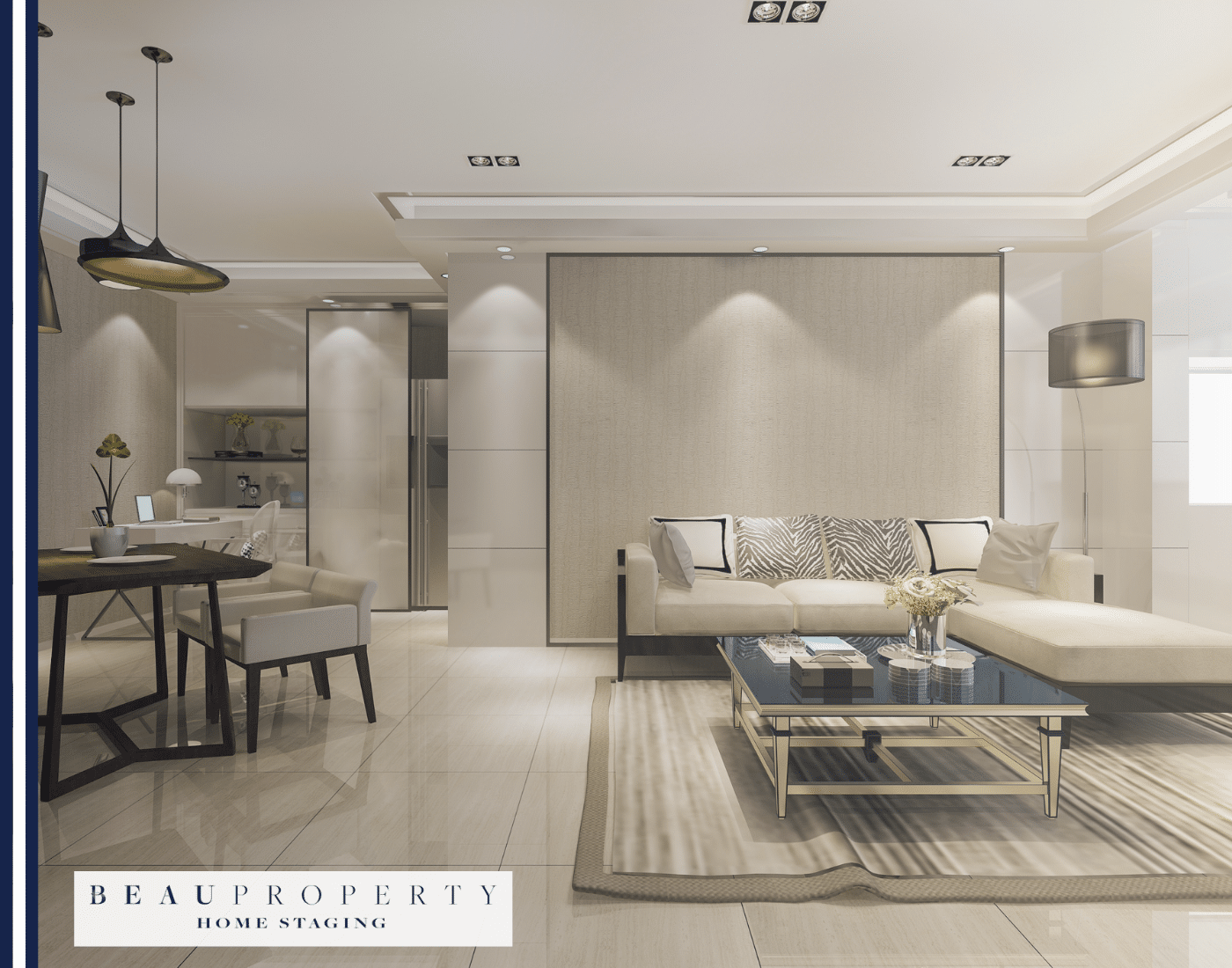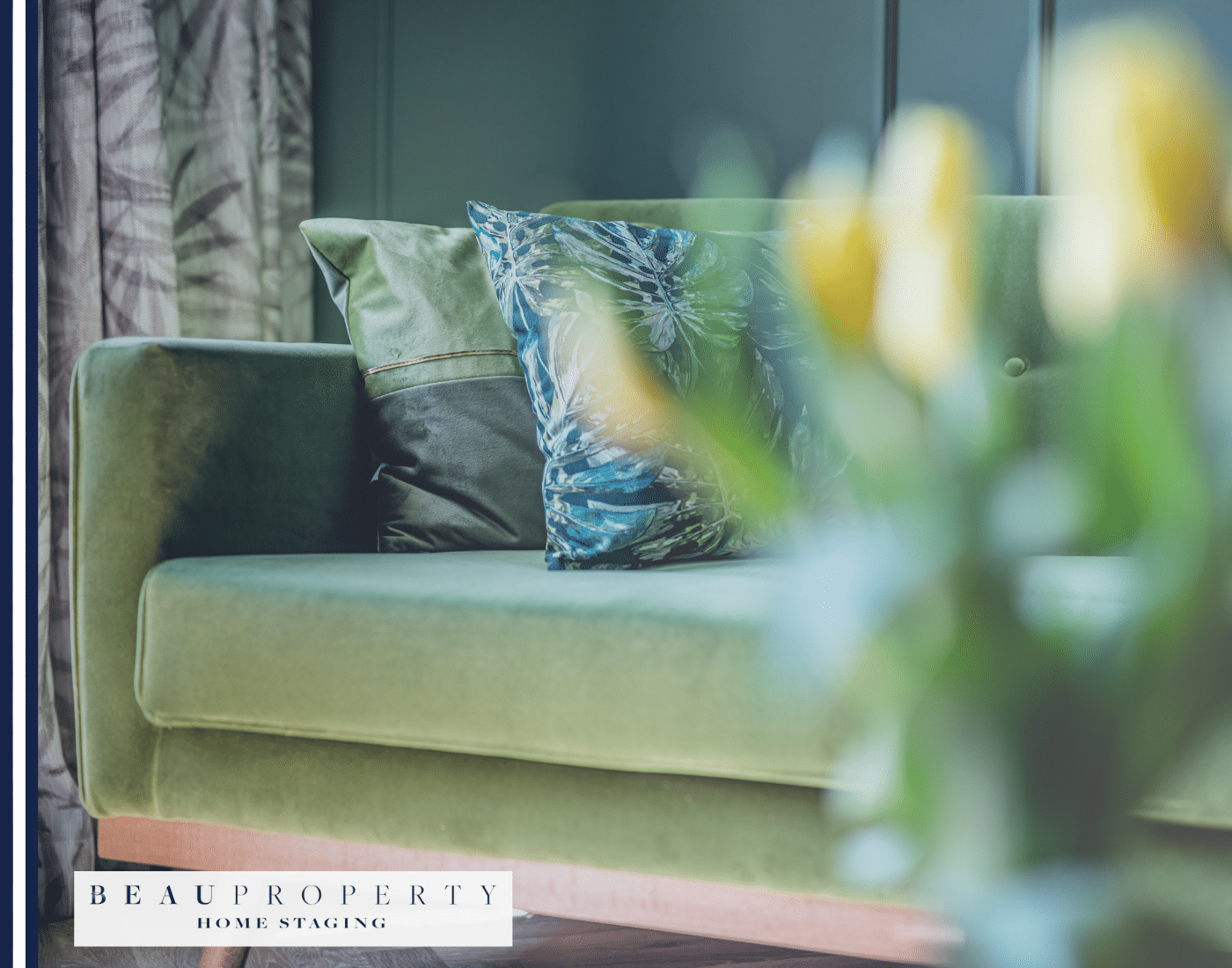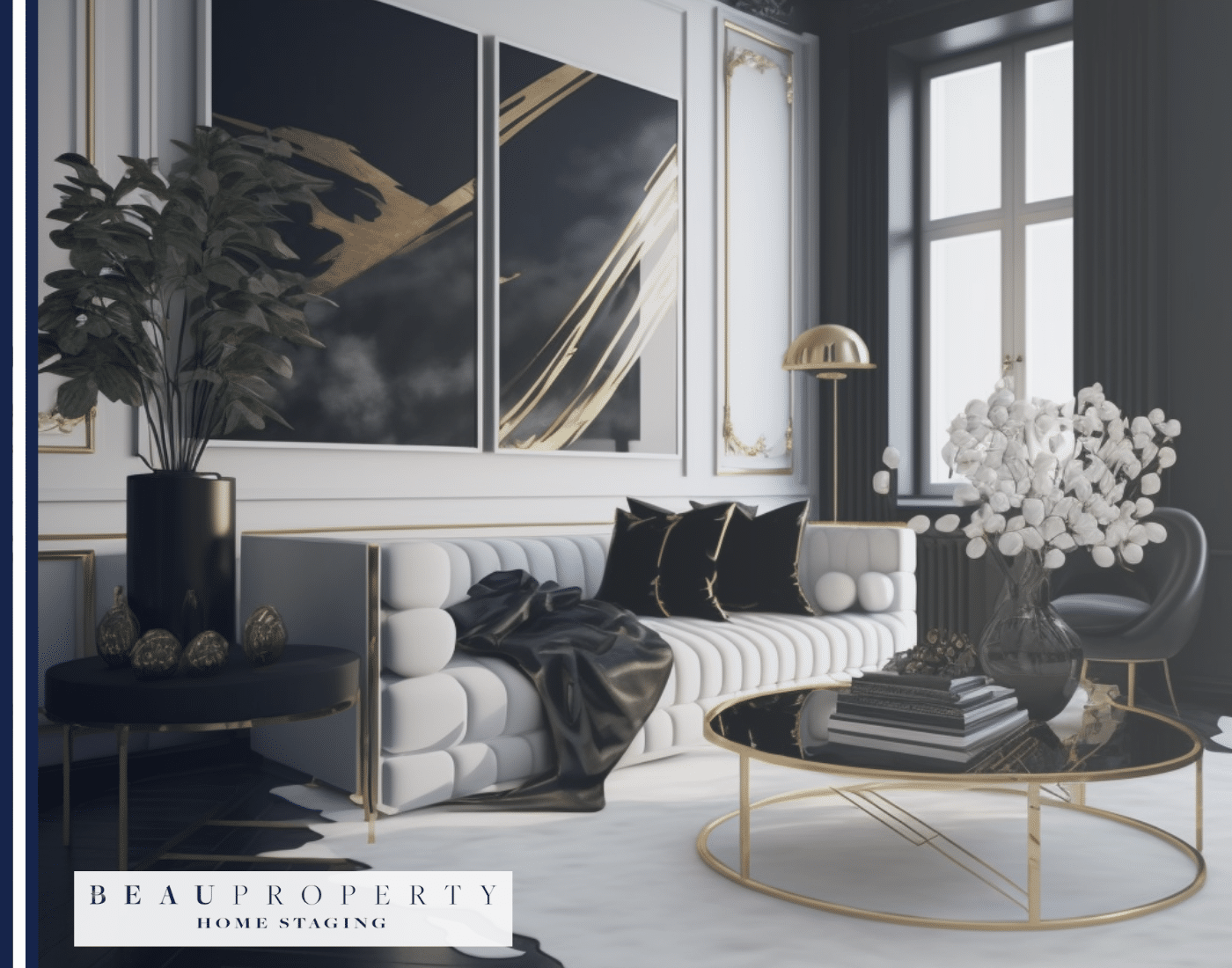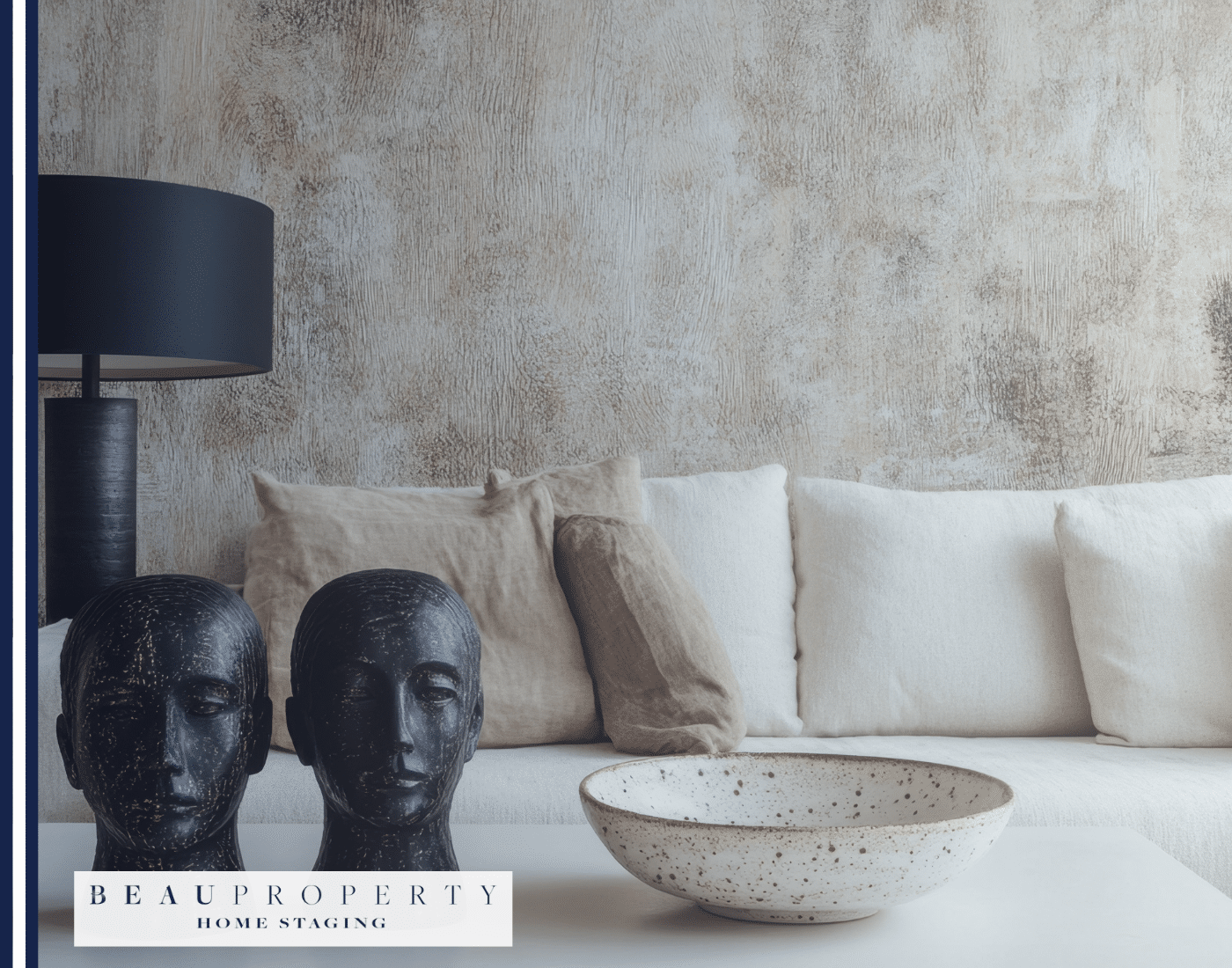Understanding the Impact of Living Room Staging
The Importance of the Living Room as a Focal Point for Potential Buyers
The living room is often the heart of a home, serving as a central space for relaxation and socialising. For potential buyers, it is a key area that can set the tone for their impression of the entire property. An inviting and well-staged living room can significantly influence their perception and desire to purchase.
How Effective Staging Can Increase Property Value
Effective staging can make a considerable difference in property value, with homes selling for 5-15% over their listing price. By creating an enticing environment, staging helps buyers visualise the potential of a space, making it easier for them to see themselves living there. The emotional connection buyers feel towards a well-staged home often translates into a willingness to pay a premium.
The 3-Foot 5-Foot Rule in Home Staging and Its Application in the Living Room
The 3-foot 5-foot rule is a principle employed by professional stagers to optimise how potential buyers view objects and details within a home. According to this rule, objects within three feet are observed in great detail, while those beyond five feet are viewed from a broader perspective.
Applying the 3-Foot 5-Foot Rule
- Close-up Details: For items within three feet, ensure surfaces like coffee tables are clutter-free and feature simple, elegant décor such as a centrepiece or a stack of aesthetically pleasing books.
- Overall Arrangement: Items and furniture within the five-foot range should contribute to a balanced and harmonious layout. Avoid overcrowding and ensure the arrangement promotes easy movement and conversation.
By adhering to these principles, you can present your living room in the best possible light, increasing the chances of a successful sale.
Decluttering and Depersonalising Your Space
Removing Excess Furniture
Creating a spacious appearance in the living room is paramount in home staging. Start by removing oversized and bulky furniture that dominates the space. Opt for pieces with open structures, such as light linen sofas or acrylic chairs, which can give the room an airy feel, making it appear larger and more inviting. Avoid cramming multiple pieces into one area as it can restrict movement and detract from the room’s overall appeal.
Eliminating Personal Items
Depersonalising is crucial to help potential buyers envision the space as their own. Remove family photos, personalised artwork, and any memorabilia that could distract visitors from seeing the home as a blank canvas for their own life. Personal items, while sentimental, can prevent buyers from emotionally connecting with the space and deter them from picturing their own belongings in the home.
Organising Storage Areas
Ensuring storage areas are organised is essential. Buyers often inspect closets, cabinets, and other storage spaces to assess functionality and capacity. To create an appealing and tidy appearance, utilise clear, stackable containers and label everything to maximise efficiency and space. Avoid overstuffing these areas as cluttered storage can give the impression of insufficient space. Neatly stacked and organised storage solutions can impress buyers and contribute to the overall sense of order and cleanliness in the home.
Furniture Arrangement and Selection
Floating Furniture for Improved Flow and Spaciousness
Arranging furniture away from walls can significantly improve the flow and spatial perception of a room. This technique creates pathways and prevents the room from feeling cramped. Instead of pushing sofas and chairs against the walls, position them to form a central seating area. This approach delineates different functional zones within the space, making it more inviting and easier to navigate.
Selecting Complementary Furniture Pieces
Choosing the right furniture involves more than aesthetic appeal; it’s about scale and proportion. Oversized furniture can overwhelm a space, while undersized pieces might make the room feel incomplete. Use the 2/3 rule to maintain visual balance: major furniture pieces should occupy approximately two-thirds of the space they are against. This approach ensures enough breathing room and maintains a harmonious layout.
Incorporating Biomorphic Modernism
Biomorphic modernism, characterised by its organic shapes and curved furniture, is a thriving trend in interior design. Curved sofas and tables can soften the room’s look, making it more dynamic and interesting to potential buyers. By integrating pieces with rounded edges, you evoke a sense of flow and harmony throughout the living room.
Colour Schemes and Paint Choices for 2025
Shifting to Warmer Neutrals
Interior design for 2025 is transitioning from stark whites and all-grey palettes to warmer neutral tones. Instead of the cold, modern aesthetics that dominated the last decade, homeowners and designers alike now favour hues that evoke warmth and comfort. This shift aims to create more inviting and hospitable living spaces.
Trending Colours: Cinnamon Slate and Heathered Plum
Two prominent colours leading this trend are Cinnamon Slate and heathered plum tones. Cinnamon Slate, named the colour of the year by Benjamin Moore, is a delicate mix of heathered plum and velvety brown. It embodies richness and warmth, making it perfect for creating a cozy and elegant atmosphere in the living room. Heathered plum, with its unique blend of purple and grey, offers a sophisticated yet welcoming feel that complements a variety of design styles.
Applying the 60-30-10 Colour Rule
To achieve a balanced and visually appealing colour scheme, apply the 60-30-10 rule in your living room. This method ensures a harmonious design by allocating your primary, secondary, and accent colours in precise proportions:
- 60% Primary Colour: This should be your dominant colour, often used on walls, flooring, or large furnishings. Warmer neutrals like Cinnamon Slate can effectively set the tone for the room.
- 30% Secondary Colour: A contrasting or complementary shade used for furniture, curtains, or large accessories. Heathered plum can serve as an excellent secondary colour, adding depth and contrast.
- 10% Accent Colour: Use this for smaller decorative items or highlights, such as cushions, lamps, or artwork, to add pops of interest and vibrancy.
By using the 60-30-10 rule, you can create a layered, cohesive space that feels both balanced and dynamic.
Lighting Strategies to Enhance Appeal
Maximising Natural Light
Natural light is a potent tool in home staging, bringing vibrancy and warmth into the living room. Begin by ensuring windows are clean and unobstructed, promoting maximum daylight penetration. Opt for lighter curtains or sheer coverings to allow sunlight while maintaining privacy. Light-reflective wall paints in shades like white, soft grey, pale blue, and cream can enhance brightness and create the illusion of a more open space. Mirrors and reflective surfaces strategically placed can also help in bouncing natural light throughout the room, amplifying its overall luminosity.
Incorporating Layered Lighting
A well-lit living room balances natural light with layered lighting to offer versatility and ambiance. Layered lighting involves the integration of ambient, task, and accent lighting to cover all facets of illumination.
- Ambient Lighting: Start with overhead lights like ceiling fixtures or recessed lighting to provide general illumination.
- Task Lighting: Introduce table lamps, floor lamps, or under-cabinet lights focusing on specific areas for activities like reading or working.
- Accent Lighting: Use wall sconces, spotlights, or picture lights to highlight special features, artwork, or architectural elements.
Creating a dynamic mix of lighting sources at varying heights and positions can transform a room, making it inviting and functional, day or night.
Updating Outdated Fixtures
Modern design sensibilities play a crucial role in enhancing the appeal of the living room. Contemporary lighting fixtures are defined by clean lines, geometric forms, and the use of materials that can integrate seamlessly with the rest of the décor. Replace outdated fixtures with sleek, modern designs that incorporate current technologies. Features like LED lights, dimmers, and smart controls not only add functionality but also cater to the preferences of today’s buyers who value energy efficiency and convenience.
Choosing warm white lighting, typically in the range of 2700K to 3000K, can create a cosy and inviting atmosphere, ideal for a space meant for relaxation. Pay attention to the size and style of light fixtures, ensuring they fit proportionately within the room and complement the overall aesthetic.
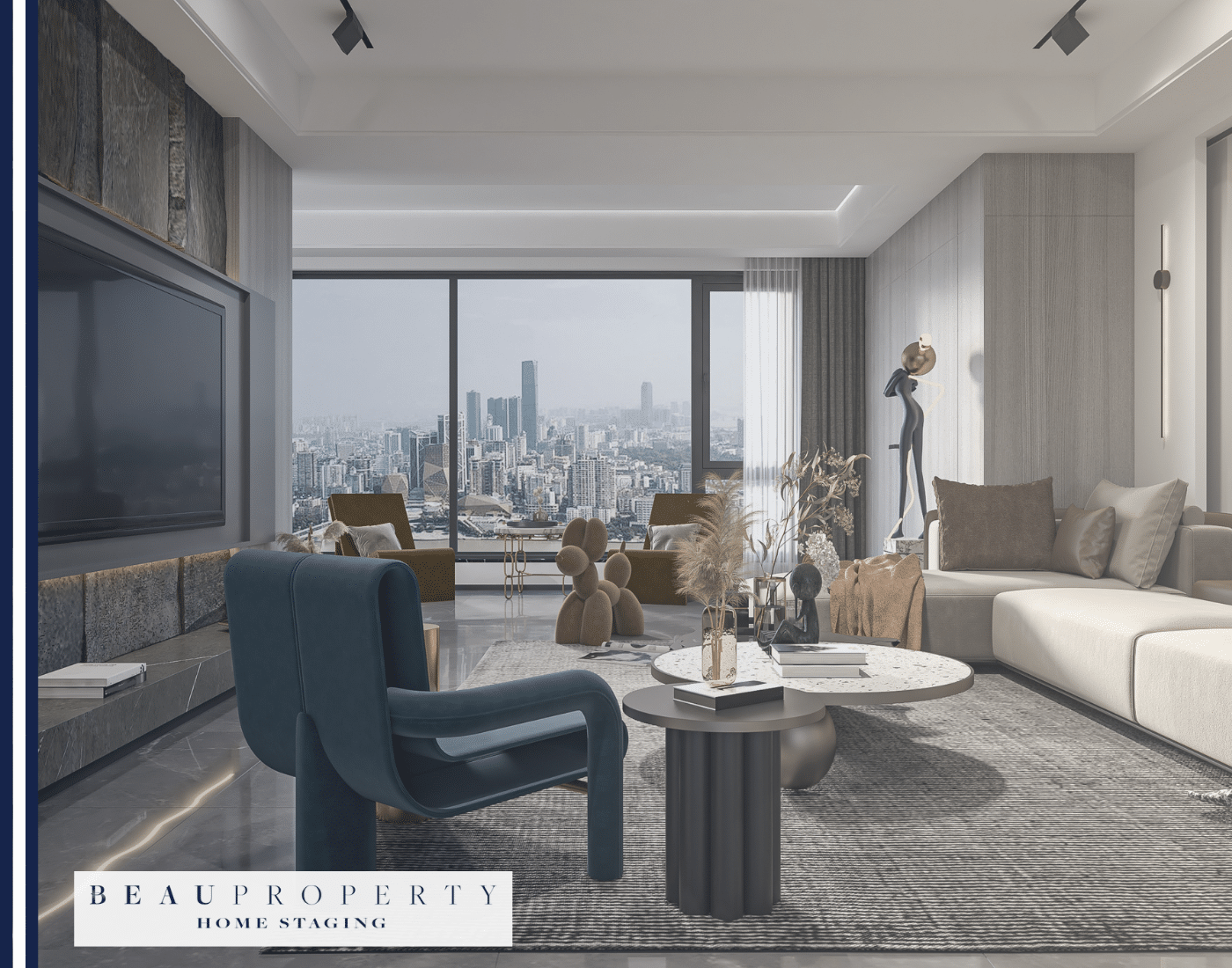
Creating Focal Points and Visual Interest
Highlighting Architectural Features
Architectural features, such as fireplaces or built-ins, should take centre stage in your living room staging effort. By drawing attention to these elements, you can enhance the room’s character and make it more appealing to potential buyers. For example, style a fireplace with a simple yet striking mantel display—think a large mirror flanked by elegant candlesticks. Built-ins can be dressed with tasteful decor, leaving enough space to avoid clutter. Emphasising these features allows their intrinsic value to shine through.
Strategic Use of Statement Pieces
Introducing statement pieces provides an opportunity to inject personality into the space without overwhelming it. Choose one or two distinctive items that reflect current design trends, such as a bold piece of artwork or a unique coffee table. These items should complement the overall aesthetic while standing out enough to capture the eye. Balance is key; too many striking pieces can make the room appear chaotic, while the right amount can create visual interest and elegance.
Furniture Arrangement for Focus
Arranging furniture to direct attention to the room’s best features can magnificently transform the space. Position sofas and chairs in a manner that showcases the main elements. For instance, float a sofa facing a window with a gorgeous view or arrange seating around a central fireplace. Ensuring pathways are clear and there is a natural flow within the room encourages buyers to explore and envision themselves in the space.
Incorporating Texture and Contrast
Adding Depth with Varied Textures
Integrating a mix of textures in your living room fosters a sense of depth and richness that elevates the space from mundane to captivating. Layering textures, like plush rugs juxtaposed with sleek metallic finishes, creates a multidimensional effect that enriches the room’s ambience. By incorporating textiles such as velvet, linen, and wool, you add warmth and visual interest, transcending a simple, flat design. Furthermore, the combination of soft textiles with rough surfaces, like a plush throw on a rustic wooden coffee table, ensures a balanced aesthetic that is both inviting and appealing.
Balancing Hard and Soft Elements
Achieving harmony in a room involves the delicate interplay between hard and soft textures. This balance brings about a dynamic contrast that is both calming and engaging. Soft textures, such as velvet cushions or knits, offer comfort and tactile allure, while harder elements, like glass or metal, introduce structure and modernity. A sleek, modern sofa can complement a rustic coffee table, demonstrating how the juxtaposition of different textures enhances the overall design.
Creating Visual Interest in Neutral Spaces
Textural contrast is vital in neutral settings to avoid monotony and ensure visual interest. When a colour palette consists of similar shades, introducing different textures interrupts this uniformity, stimulating the eye and bringing balance. For example, mix smooth marble surfaces with tactile fabrics like wool or silk. This creates layers that engage viewers and enrich the space’s overall feel. Moreover, incorporating elements like woven baskets or sculptural decor can invigorate the environment, transforming it from plain to compelling.
Sustainable and Eco-Friendly Staging Elements
Incorporating Plants and Natural Elements for Biophilic Appeal
Enhancing your living room with plants and natural elements not only adds beauty but also embraces biophilic design principles. Indoor plants can improve air quality and create a sense of well-being. Choose low-maintenance greenery, such as succulents, ferns, or snake plants, to effortlessly elevate your space. Incorporate natural wood finishes, stone accents, and water features to further bring the outdoors in and create a serene, inviting atmosphere.
Choosing Sustainable Materials and Furnishings
When staging your living room, opt for sustainable and eco-friendly materials. Furniture made from reclaimed wood, bamboo, or recycled materials reduces the environmental impact. Look for upholstery fabrics that are organic or made from natural fibres, such as cotton, linen, or wool. Prioritising sustainable choices showcases a commitment to eco-conscious living, appealing to modern buyers who value sustainability.
Highlighting Energy-Efficient Features
Energy-efficient features are increasingly important to homebuyers. Highlight elements like double-glazed windows, LED lighting, and smart thermostats in your living room staging. Replace outdated light bulbs with energy-saving alternatives and ensure your heating and cooling systems are up-to-date and efficient. Emphasising these features demonstrates the home’s commitment to reducing its carbon footprint and can be a significant selling point.
Accessorising with Purpose and Restraint
Minimal Yet Impactful Decor
Balancing minimalism and impact is key when accessorising your living room. Start by selecting only a few pieces that serve both aesthetic and functional purposes. This approach reduces clutter while ensuring your space feels curated and personal. Fewer items overall mean that each decorative element can shine, contributing significance to the room’s character. For instance, a single large piece of art adds more impact and avoids the scattered look that clusters of small items can create.
Grouping in Odd Numbers
An effective technique to enhance visual interest is the rule of odd numbers. Items grouped in threes or fives tend to be more visually engaging due to their asymmetrical and dynamic arrangement. This technique can be applied to table settings, mantle displays, and other decorative compositions. It naturally guides the viewer’s eye through the space, creating a balanced yet intriguing display.
Creating a Welcoming Atmosphere
To maintain a welcoming and lived-in atmosphere without falling into clutter, choose decor that embodies the warmth of a home. Small personal touches, like a curated stack of books or a few family pictures in unified frames, can add warmth without overwhelming. These elements provide a hint of personal story, making the space feel relatable and inviting.
Addressing Flooring and Rugs
Refreshing and Updating Flooring
Refreshing tired flooring breathes new life into a living space without the need for extensive renovation. You can choose budget-friendly options like laminate overlays or peel-and-stick vinyl tiles which offer a cost-effective update. If hardwood floors are worn, consider recoating rather than full refinishing to save time and costs while achieving a refreshed appearance. It’s also worth exploring the growing trend towards warmer natural wood tones, which are eclipsing the previous popularity of grey-washed floors. Some options, such as engineered wood, provide durability while withstanding fluctuating climates, which is ideal for various environments.
Selecting and Placing Rugs
Rugs serve as functional and decorative elements in a living room. Choosing the right size is essential; an 8′ x 10′ or 9′ x 12′ rug typically suits most living rooms. Ensure at least the front legs of seating furniture rest on the rug to unify the space visually. The 18-inch rule dictates that there should be about 18 inches of exposed flooring around a rug’s perimeter to maintain proper proportion. For smaller rooms, this can be reduced to around 8 inches to prevent the room from appearing cramped. Employing rugs of different shapes or layering can add depth and variety, tactile interest, and clearly defined areas within an open-plan layout.
Transitioning Flooring Trends
Shifts in flooring trends are notable, moving away from once-common grey flooring to warmer neutral options like beige or natural wood hues. This change resonates with broader aesthetic movements towards a more inviting and timeless interior design framework. Whether updating the flooring or selecting new rugs, these trends reflect a broader movement towards warmth and simplicity in home décor. Staging your home with this refined approach ensures broad appeal, laying the groundwork for welcoming potential buyers. Engaging with contemporary trends not only satisfies current aesthetic demands but also sets a harmonious foundation for further staging considerations moving forward.
Window Treatments That Sell
Choosing Simple, Elegant Window Coverings
Effective window treatments elevate a living room’s aesthetic while maximising natural light. Traditional interior shutters and minimalistic blinds are gaining popularity over heavier draperies. These treatments offer a timeless, sophisticated look that seamlessly blends with various decor styles. Shutter options, such as classic plantation shutters, add an enduring charm, while simple roller blinds maintain a clean, uncluttered appearance.
Ensuring Clean, Functional, and Contemporary Treatments
Maintaining cleanliness and functionality in window treatments is crucial. Sheer shades and lightweight fabrics like linen or silk are excellent choices for a living room. These materials diffuse sunlight, reduce glare, and provide privacy while contributing to a modern, airy feel. It’s also essential to keep treatments dust-free and easy to operate to ensure they meet the demands of daily living.
Selecting Neutral Options
Neutral window coverings are versatile and complement various interior styles without dominating the space. Opt for hues like off-white, beige, or light grey to create a harmonious backdrop. This approach not only ensures that the treatments blend seamlessly with existing decor but also maintains a bright, open atmosphere. Trending towards simplicity, Roman shades or panel track blinds in understated colours can add subtle sophistication to the living room.
Creating Conversational Furniture Groupings
Arranging Seating to Facilitate Natural Conversation and Flow
For a living room to serve as an inviting and social space, it needs to encourage conversation naturally. Start by arranging seating in a circular or semi-circular layout. This arrangement fosters a sense of inclusiveness, making it easier for individuals to engage in dialogue. By positioning chairs and sofas in these formations, you promote eye contact and interaction, essential for a lively gathering. Remember to maintain a harmonious flow by considering pathways. A minimum clearance of 30 inches between furniture pieces ensures that movement around the room is unhindered. This strategy not only enhances accessibility but also maintains a spacious appearance.
Ensuring Pathways of at Least 30 Inches
Pathways play a crucial role in facilitating the flow of movement within living room spaces. By ensuring pathways of at least 30 inches, you create an environment that feels open and easily navigable. This spacing is significant for both functionality and aesthetics, as it allows guests to move freely without obstruction, making the room feel larger and more inviting. When arranging furniture, always account for these pathway guidelines to strike a balance between accessibility and design continuity. Positioning coffee tables, ottomans, and side tables carefully can emphasise this balance, providing both utility and visual harmony.
Creating Intimate Seating Areas Even in Larger Spaces
Creating a cozy atmosphere in expansive living rooms can be challenging, but it’s essential for making the space feel inviting. Use area rugs and furniture arrangements to define distinct zones within larger rooms. For example, anchor a conversation area with a sizeable area rug, arranging chairs and a coffee table atop it. This helps to delineate the space, making it feel more intimate. Additionally, use smaller groupings of seating, like a pair of armchairs with a side table between them, to create private nooks within the larger room. These setups allow for smaller, more intimate conversations, providing a welcoming environment regardless of the room’s size.
Incorporating Technology Thoughtfully
Minimising Visible Cords and Technological Clutter
The modern living room is an integration hub for technology, but visible cords and clutter can detract from its appeal. Hide wires using cable management solutions like cord covers or clips. Opt for furniture pieces with built-in cable management systems to ensure a clean, organised look. Place technological devices discreetly within the decor, such as on a bookshelf or inside decorative covers, allowing them to blend into the background seamlessly.
Highlighting Smart Home Features That Add Value
Smart home features can significantly boost the perceived value of a property. Highlight these by demonstrating their convenience and benefits. Smart lighting systems, which can be controlled via apps or voice commands, create customisable ambiance and improve energy efficiency. Similarly, smart thermostats can adjust settings based on occupancy, ensuring comfort and cost savings. Automated window shades and security systems also appeal to tech-savvy buyers. Showing how these features integrate smoothly into the home can enhance the selling point.
Creating Spaces That Accommodate Modern Tech Needs Without Dominating
While it is essential to accommodate modern tech needs, it is equally crucial to prevent these elements from overpowering the living room’s design. Incorporate multifunctional furniture, like a coffee table with built-in charging stations or a sofa with integrated speakers, to conserve space and maintain aesthetics. Tech should enhance, not dominate, the living room. Use neutral palettes and elegant designs to ensure tech elements complement the room’s style. This careful balance creates an environment that meets technology needs while maintaining a warm, inviting atmosphere.
Seasonal Staging Adjustments
Adapting Colour Accents and Textiles to Suit the Selling Season
Changing colour accents and textiles in the living room according to the seasons can significantly enhance the space’s appeal. In spring, opt for lighter colours and fresh, airy fabrics to evoke a sense of renewal and vibrancy. Shades such as potted green plants, pastel cushions, and linen throws can brighten the room and make it feel inviting. For summer, consider cool and refreshing colours like blues and greens, alongside materials like cotton and seagrass.
As autumn approaches, warmer hues such as burnt oranges, crimson, and shades of gold can add a cozy, seasonal touch. Incorporating elements like woollen blankets, plush pillows, and rustic decor pieces can create an ideal fall atmosphere. Winter calls for rich, deep colours like heathered plums and navy blues, paired with tactile fabrics such as velvet and faux fur to generate warmth and comfort.
Incorporating Subtle Seasonal Elements
Adding subtle seasonal elements can enhance comfort and appeal without overwhelming the space. For instance, using natural decor like autumn leaves or spring blossoms on the coffee table can subtly reflect the season. Similarly, scented candles with seasonal fragrances—like pine for winter or lavender for summer—can also add to the atmosphere without being overly obtrusive.
Adjusting Lighting to Compensate for Seasonal Changes in Natural Light
Lighting adjustments are crucial for balancing the seasonal changes in natural light. During winter months, shorter days require more ambient and task lighting to maintain a bright and welcoming environment. Consider using warmer light bulbs to add a cosy feel. Dimmers can also help in adapting the lighting to different times of the day and for various activities.
For the brighter months of summer, maximise natural light by keeping window treatments light and sheer. Ensure windows are clean and unobstructed to allow as much daylight as possible. Adding mirrors can also help to reflect light and make the room feel more spacious and luminous.
Scale and Proportion Considerations
Ensuring Furniture is Proportionate to Room Size
Selecting furniture that is proportionate to the room size is critical in creating a balanced living space. The 2/3 rule is instrumental in this regard. According to this rule, the main furniture piece should occupy about two-thirds of the space against a wall, leaving enough room for movement and preventing the area from looking overcrowded. Ensuring proportions helps the room feel neither too cramped nor too sparse.
Balancing Visual Weight Throughout the Space
Achieving visual balance involves distributing visual weight evenly across the room. This can be done by offsetting large, bulky furniture with lighter, open-frame pieces. Furthermore, an even distribution of bold colours and dark tones helps maintain balance. Mixing materials and textures also keeps the eye moving naturally, thus enhancing the room’s visual appeal.
Avoiding the Common Mistake of Pushing All Furniture Against Walls
One prevalent mistake in furniture arrangement is pushing all pieces against the walls. This can make a room feel flat and uninviting. Instead, floating furniture away from walls, creating conversational zones, and positioning pieces to highlight the natural traffic flow are more effective strategies. This not only makes the space more user-friendly but also creates a larger, more open feel.
Addressing Problem Areas and Awkward Spaces
Strategies for Highlighting Unusual Architectural Features Positively
Awkward spaces in your living room can be transformed into distinctive features with the right approach. Start by embracing these elements instead of trying to hide them. For instance, a protruding alcove can be styled as a cosy reading nook with a comfortable chair and bookshelf. Similarly, an oddly placed window can be highlighted with a well-placed plant or piece of art, drawing attention to its unique charm.
Minimising Attention to Less Desirable Elements
While some features can be highlighted, others might need subtle management. For spaces prone to clutter, such as areas around a boiler or under-stair spaces, incorporate built-in storage solutions. Use custom-built shelves or closets to keep these areas functional yet unobtrusive. Another trick is to paint these elements in the same colour as the surrounding walls, helping them blend in seamlessly.
Turning Challenging Spaces into Functional Assets
Awkward spaces can often be turned into functional zones:
- Dividing Large Rooms: If your living room is unusually shaped or large, use furniture to create distinct zones. For example, divide the space into a TV area, a reading nook, and a small home office.
- Utilising Corners: Corners can be notoriously difficult to decorate. Consider placing a small table with a plant or lamp. Another option is to install floating shelves for books and decorative items, turning the corner into a beautiful display area.
- Elevating Areas with Multi-Purpose Furniture: In tricky spots, opt for multi-purpose furniture like a storage ottoman or a convertible sofa. These add practicality and can be easily moved as needed.
Adopting these strategies can help in making the most of your space, ensuring that potential buyers can see every area as an asset rather than a challenge. Now that we have addressed how to navigate awkward spaces skillfully, it’s essential to consider how to create a cohesive flow through—one that enhances the entire living space’s appeal.
Creating Visual Continuity Throughout the Home
Ensuring the Living Room Styling Connects with Adjacent Spaces
Creating visual continuity is crucial for a cohesive and harmonious home. A well-styled living room should seamlessly integrate with adjacent spaces, enhancing the overall flow. This can be achieved by repeating elements like colours, themes, or materials. For instance, carrying a specific colour or material from the living room into the hallway or kitchen helps maintain a cohesive look.
Maintaining a Cohesive Colour Story Throughout the Home
Colour plays a vital role in tying spaces together. Opt for a consistent colour palette that transitions well between rooms. The 60-30-10 rule can be particularly useful: 60% of a dominant colour, 30% of a secondary colour, and 10% as a complementary accent. This ensures a balanced and visually pleasing environment.
Utilising a single neutral colour throughout the main areas and varying it with accents in different rooms is another effective strategy. This approach maintains visual interest while ensuring rooms do not feel disconnected.
Creating Transitions That Guide Potential Buyers Naturally Through the Space
Thoughtful transitions between spaces can guide potential buyers and create a sense of flow. This can be achieved by ensuring sightlines are clear and strategic furniture placement that attracts movement into adjacent areas. Incorporate materials and design elements from one room to the next to create a smooth passage. For example, use similar flooring or repeating design motifs like patterns or textures to connect spaces visually.
Finishing Touches for Maximum Impact
Adding Fresh Elements
To infuse life and energy into your living room, consider adding fresh flowers or plants. Lush greenery or a colourful bouquet can instantly uplift the ambience, making the space feel more inviting and vibrant. Choose low-maintenance plants like succulents or peace lilies that thrive indoors, adding a touch of nature without overwhelming the space.
Ensuring Impeccable Cleanliness
A tidy and spotless living area significantly impacts potential buyers. Before showings, conduct thorough cleaning to ensure all surfaces are sparkling and free of dust and clutter. Pay special attention to commonly overlooked areas such as corners, window sills, and baseboards. A pristine space not only enhances the room’s aesthetics but also conveys a message of well-maintained upkeep.
Performing a Final Walkthrough
Conduct a final walkthrough from a buyer’s perspective, ensuring that every aspect of the room is appealing. Pay attention to the flow of space, overall cleanliness, and arrangement of furnishings. Adjust curtains and blinds to allow optimal natural light, and ensure decorative items are placed thoughtfully to maintain simplicity and elegance.
Staging for Photography and Virtual Tours
Capturing the Perfect Image
Staging for photography is a unique discipline requiring a keen eye for composition and detail. The goal is not just to beautify the space, but to ensure it photographs well. Start by eliminating clutter, as a clean frame is essential. Remove magazines, toys, and excess decor that disrupts the scene. Pay attention to lighting; maximise natural light but supplement with strategically placed lamps or LEDs to avoid shadows. Ensure that fabric and pillows are smoothed out, as wrinkles become more apparent in high-resolution images.
Virtual Strategies and Techniques
Virtual staging offers flexibility for real estate agents to adapt interiors to appeal to a specific target market. These digital enhancements can make a room appear furnished and inviting without the physical furniture, which is a cost-effective alternative. Incorporate high-resolution images and thoughtful decor placements that capture the essence of potential life in the home, enhancing buyer imagination and connection to the property.
Enhancing Buyer Engagement Online
For virtual tours, create a smooth, engaging experience that invites viewers to navigate the space as they would in person. Use strategic shots that flow naturally from room to room. Highlight key features with dynamic angles, and ensure colours remain consistent with a balanced palette that photographs flatteringly. These tours broaden reach and engagement, offering first impressions that can be pivotal in decision-making.
Working with Professional Stagers: When and Why
Understanding the Role of Professional Stagers
Engaging a professional home stager can transform a property’s attractiveness, offering a competitive edge in the market. Real estate staging involves presenting the home compellingly to potential buyers, helping them visualise themselves within the space. This professional touch often results in properties selling faster and for a higher value, demonstrating the stager’s pivotal role in the selling process.
When to Consider Professional Help
Recognising when to seek a professional stager’s assistance is crucial. Homeowners should consider this when a property struggles to attract offers or when aiming for an elevated market presence. Stagers are particularly beneficial for vacant homes, spaces with awkward layouts, or homes with unique architectural features that might not appeal universally.
Return on Investment for Staging Services
The financial returns from investing in professional home staging can be substantial. On average, home staging results in a return of 5-15% over the initial asking price, validating the monetary value of the services rendered. For sellers, a well-staged home often captures buyer interest more effectively, which can lead to swifter sales at higher prices.
Collaborating with Stagers for Optimal Results
Successful collaboration with a stager involves clear communication and setting defined objectives. Sellers should inform stagers about their expectations and budget constraints, allowing for tailored staging strategies that align with goals. A productive partnership hinges on trust and understanding, ultimately making the staging process a seamless augmentation to the overall sales strategy.
Conclusion
Staging your living room effectively is essential for appealing to potential buyers and enhancing your home’s overall value. By applying these 20 must-try design tips, you can create a welcoming, functional, and visually appealing space that resonates with buyers. From decluttering and thoughtful furniture arrangements to colour choices and lighting strategies, each element plays a crucial role in creating an inviting atmosphere.
Remember, the goal of staging is not just to impress but to help buyers envision their new life in your home. Consider working with professionals if needed, and don’t hesitate to adapt your approach based on seasonal trends or buyer demographics. By investing time and effort into staging your living room, you’re setting the stage for a successful sale.

